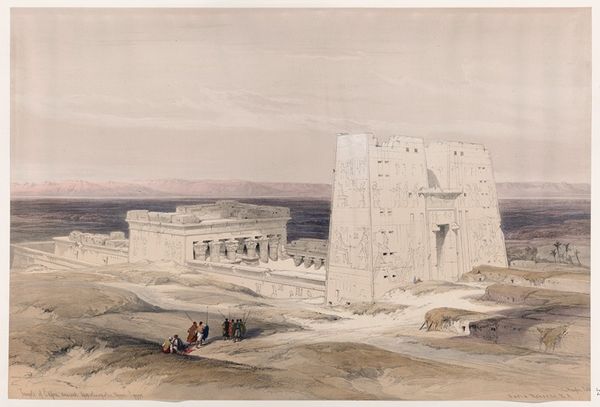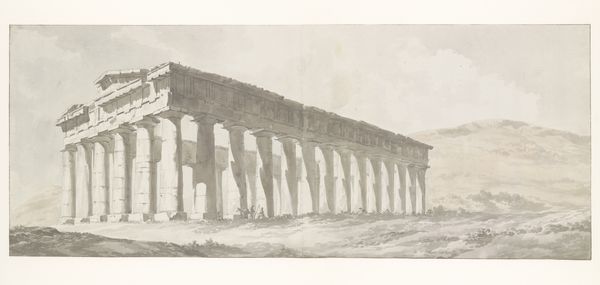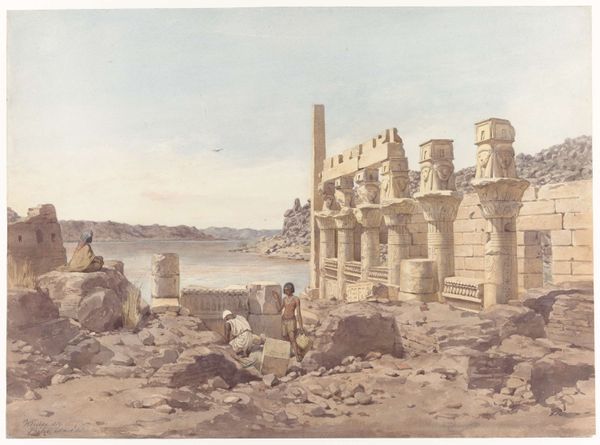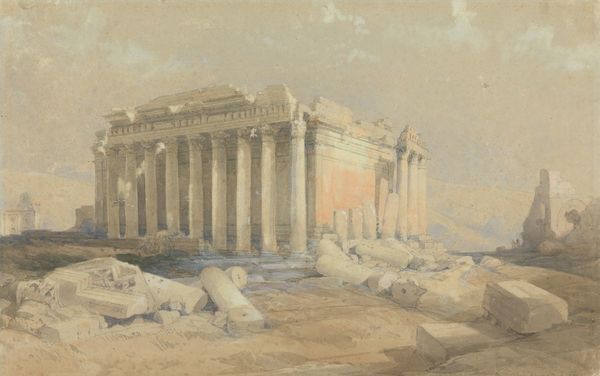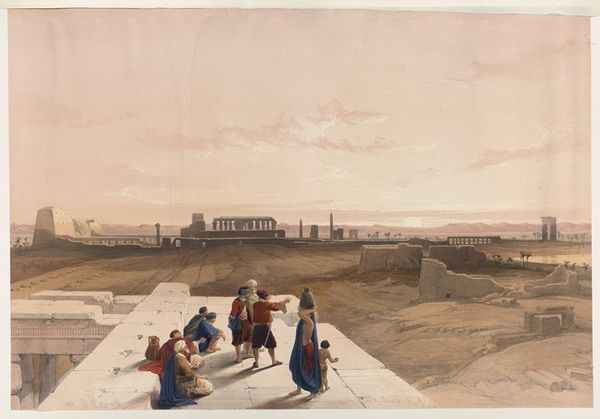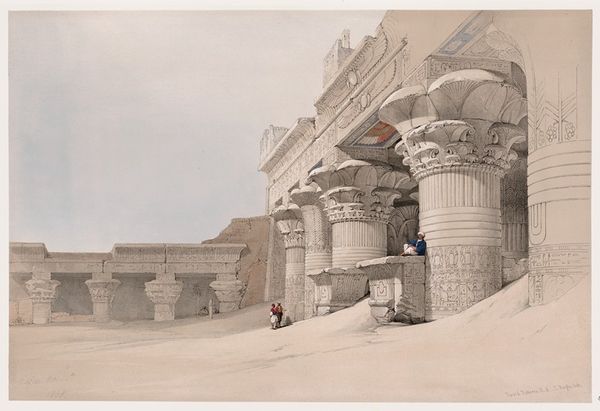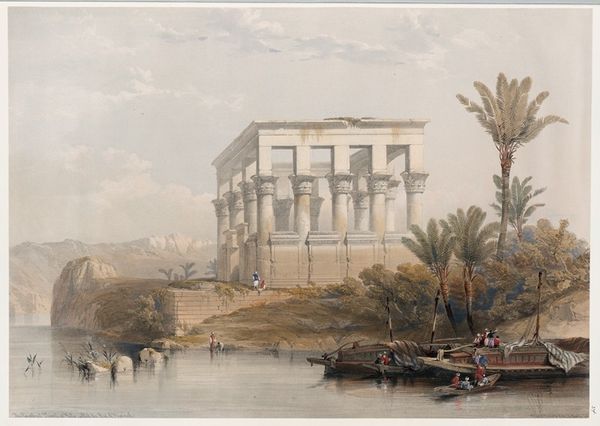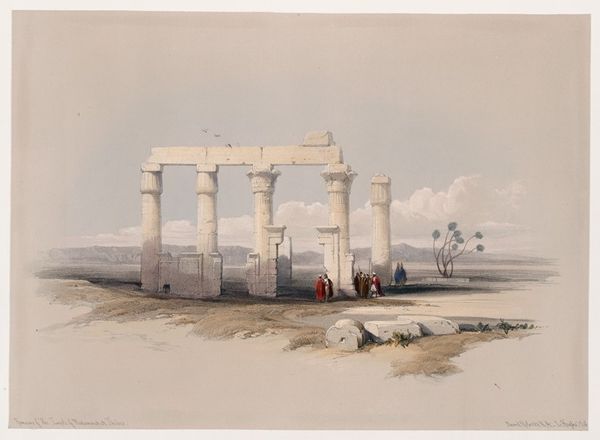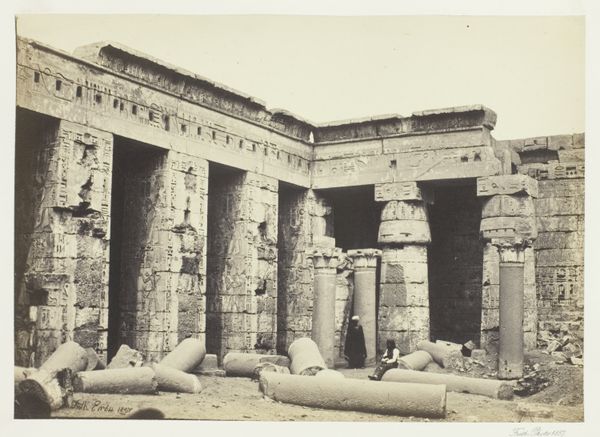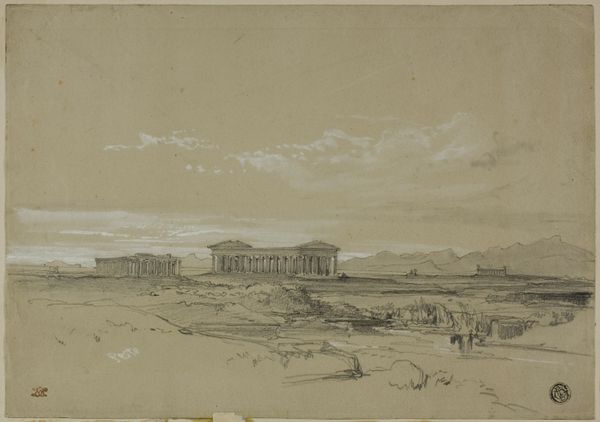
painting, watercolor
#
neoclacissism
#
painting
#
landscape
#
ancient-egyptian-art
#
watercolor
#
ancient-mediterranean
#
watercolor
Copyright: Public Domain: Artvee
Curator: This is David Roberts’ "Grand Approach to the Temple of Philae, Nubia," a watercolor completed between 1846 and 1849. What strikes you immediately? Editor: It's vast, monumental but with a delicate hand. The pale tones and details give the immense temple complex a dreamlike quality, almost like a mirage shimmering in the heat. I want to know more about the physical process of rendering something so huge so ethereally. Curator: I find it powerful how Roberts evokes the weight of millennia in these stones. The Temple of Philae was, and is, a place laden with symbolic significance. Notice the way the light plays on the hieroglyphs – they seem to whisper stories of gods, pharaohs, and cosmic order. Editor: Absolutely, but consider also the labor. The extraction, transportation, carving of each block of sandstone, the organizing of human effort at a scale we struggle to grasp. What were the social conditions in which this was built, what type of organization of production? It represents not only divinity but immense logistical undertakings. Curator: And for centuries, it was the centre of pilgrimage; an important temple dedicated to Isis. Remember how that links it to themes of rebirth, healing and devotion... a very important site of religious and cultural continuity. The image serves almost as a kind of historical mirror, reflecting a lost world to Victorian society that was obsessed with understanding its origins through classical and biblical antiquities. Editor: Yes, its lasting appeal speaks to that Victorian fascination. Roberts’ travels required significant financial backing and logistical support - this art itself becomes evidence of networks of patronage, trade, and colonialism feeding Western consumption. He could only represent this subject thanks to material conditions that underpinned it. Curator: So the art serves a powerful reminder of civilization’s constant reinvention. How potent the enduring imagery! Editor: Indeed! For me it highlights that to see antiquity with 'fresh eyes', required significant, sustained, and often invisible, material interventions and extractions.
Comments
No comments
Be the first to comment and join the conversation on the ultimate creative platform.

